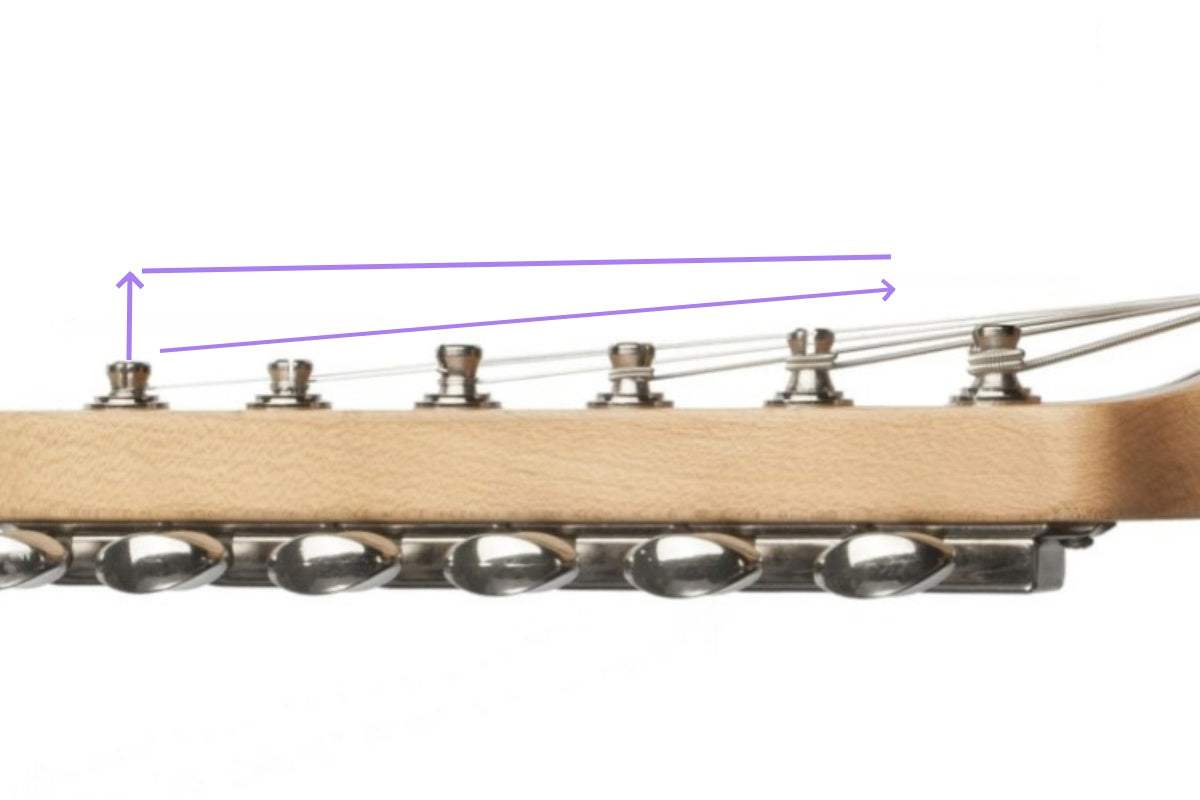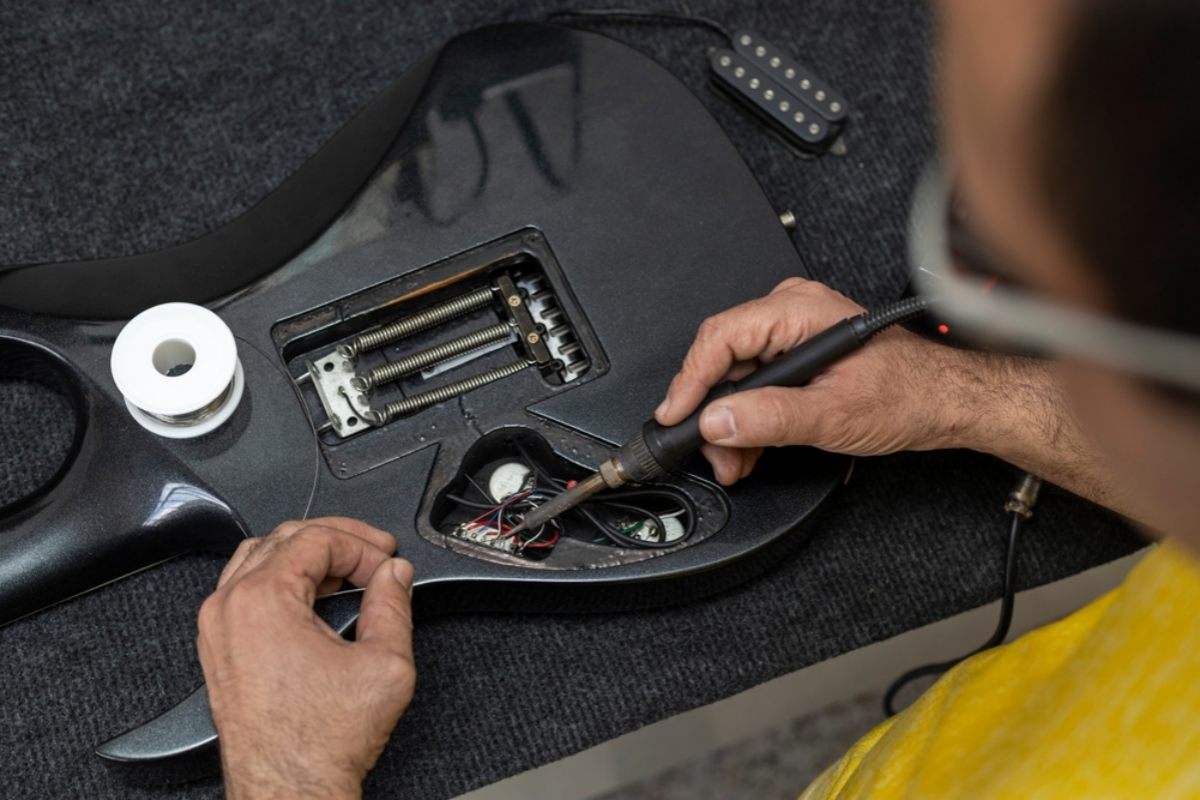Although headless guitars have been around for over 40 years, they still feel and look like a futuristic ax for most players. Something out of a sci-fi movie or a nerds-only ax.
If that’s the way you think about headless guitars, think again. The market has grown to create masterpieces that not only look cool but sound great too.
Did I convince you? Great, because here comes the fun part. We’re going to go through the different hardware combination options so you can buy or build the ultimate stage instrument.
The next headless guitar that will take your playing to the next level is out there waiting for you. Read on and find out the best headless guitar hardware combination for a road-ready, studio-friendly guitar that can perform in every scenario.
Headless Guitars Hardware Options
Whenever you’re called for a session or a live show, do you always bear in mind what kind of music you’re playing? If that’s the case, do you choose your gear to match that forecast?
Much of what makes those decisions is hardware. For example, if I’m called to a rock and roll gig, I bring my ’68 SG Jr. Its biting P-90 can take care of business and its hum isn’t my enemy. Likewise, for anything modern and clean, I’ll bring along my Custom Shop Fender Telecaster Custom 60 for extra-clear, glassy, and twangy tones.
Well, let’s talk about the options available for headless guitar hardware and then try to make the perfect matches.

Let’s Talk Pickups
Pickups make a huge difference when you talk about electric guitar tone, gain, and sound. But do headless guitars follow the same rules regular guitars do?
Well, the quick answer is yes, but that’s not the whole answer.
As I said above, the regular fate of headless guitars is the stage. They’re rarely treated as studio-only vintage instruments. So, in that scenario, the best way to go is to avoid all kinds of noises and setbacks that traditional, vintage instruments present.
Therefore, players who love distortion should aim for a hot set of humbuckers or even an active set. If you’re a player who needs to get a glass-like clean tone from your instrument, the best way to go is to have single-coil noiseless pickups.
Although there are some, it’s rare to see P-90s on headless guitars. This is, mainly, because the tone search for people who play headless guitar currently is not the search for vintage tones.
On the contrary, most headless guitar and bass players are innovative and bold trying to push the boundaries of music from the sounds and the aesthetics.

Let’s Talk Bridges
One of the main advantages of headless guitars is tuning stability. Indeed, there’s something about the double-locking of the strings that makes headless instruments stay in tune for longer.
Let’s explore possibilities:
• Floating Tremolo System – Headless guitars with floating tremolo systems, as most guitars, tend to give up some sustain and resonance because the bridge doesn’t connect to the body wood.
• Fixed Tremolo System – Headless guitars with fixed tremolo systems tend to have the best of both worlds. This is because the bridge is usually in contact with the instrument, and since guitar strings are tuned down there, the mass of the bridge will add to the overall resonance.
• Fixed Bridges – Headless guitars with fixed bridges are the ones giving you the most sustain and resonance. This is paramount for players who rely heavily on the organic tone of their instrument.
If you’re a player who loves playing with lots of gain and installed a couple of active humbuckers on your headless ax you don’t need to worry about the organic response of the instrument.
In that scenario, a floating tremolo system is the way to go since it’s the same hassle as a fixed one but with all the benefits of a double-action tremolo system.
On the other hand, if you need that organic response or buy a guitar made of swamp ash, mahogany, or pine, for example, you’ll love it even more with a fixed bridge.
Resonance and tone will be clearer and more organic. There’s nothing like the natural decay of tone being captured.
What about The Rest?
Pickups and bridges might be the most important but not the only pieces of headless guitar hardware that can make a difference.
• Pickup Selector – The pickup selector is often overlooked by most players, but it needs to be taken into consideration. For guitars with three pickups, a 5-way switch is the best option because it can give you a broader sonic palette. A 3-way switch for dual pickups is perfect.
• Coil-Tapping – Coil tapping means transforming a humbucker into a single-coil pickup. This can be done with a push/pull pot or with a mini switch installed on the pickguard.
• Active & Passive Circuits – Active guitars are punchy, modern, clear, and can handle insane levels of gain. Their active EQ can boost or cut, so tone-shaping possibilities are broader. On the other hand, passive electronics often carry more warmth and have a more organic response. Choose the one that suits your playing the most.
Some Useful Combinations
Combining pickups, bridges, and the rest is very important to achieve the tone we have in our heads. Let’s divide this into a guitar that’s a one-for-all approach, a heavy-chugging ax, a neo-soul machine, and the perfect headless guitar to play the blues.
One-For-All Guitar
• HSH pickups
• Floating Bridge
• Coil-Tapping for Humbuckers
The most versatile pickup combination ever is HSH. If you install a pair of humbuckers with coil-tapping possibilities and add the middle pickup to the equation, you can play virtually all musical styles.
Of course, it might not sound exactly like a ’59 Les Paul or a ’62 Stratocaster, but you’ll get close enough live and in the studio.
The biggest versatility in terms of vibrato systems comes from floating ones, so you can add that and have the best one-for-all combination.

Heavy-Chugging Guitar
• HH Pickups
• Fixed Bridge for rhythm players, floating tremolos for shredders
• Active Circuit
A heavy-chugging guitar is a perfect instrument to play styles like heavy metal, thrash, hardcore, or any of their sub-genres. As you might have seen on countless stages, the single humbucker or dual-humbucker configuration is metal players’ favorite.
This is mainly because you have all the aggression, high-gain punch, and tone you need with humbucker pickups and there’s no middle pickup sucking any magnetic power.
Finally, going for an active humbucker system will grant you enough clarity and punch to tame even the highest distortion settings. The fixed bridge will help your chugging chops; just make sure tuners are on the bottom so you don’t palm-mute your way to being out of tune.

Neo-Soul Machine
• HSS Pickups
• Fixed Bridge
• Coil Tapping for the Humbucker
Neo-soul, funk, trip-hop, and other sub-genres require that loud, clean, heavily compressed guitar tone to cut through. If you install a humbucker in the bridge position, you’ll be ready to play anything adding some spice and gain to a distorted part.
Mixing that with a pair of single-coil pickups and a coil-tap, you can cover those funk-ready middle-pickup tones as well as those Stratocaster-only sounds in positions 2 and four.
The fixed bridge will add to the guitar’s resonance, highlighting the percussive element of your playing.

Blues Headless Guitar
• SSS Pickups
• Fixed Tremolo Bridge
• 5-way pickup selector
The Stratocaster is the quintessential blues instrument. This is related to two main elements, the pickups, and the bridge.
Yes, you need that three-single-coil pickup configuration to recreate the audio of the classics. Furthermore, you also need the fixed tremolo system not only to add some vibrato with the tremolo arm but also to have the springs stretch as you bend the notes dripping emotion and blues-approved feeling.
Finally, the 5-way selector is paramount to have those in-between 2 and 4 positions so necessary to play the blues.

Conclusion
Tonewood, hardware, design, and construction are the four horsemen of guitar building. All of them contribute to tone, feel, comfort, and playability.
More importantly, the unique combination of all those factors will always be in the unique hands of a player, so, choosing the right combination of factors can easily take your playing to the next level.
With all the information above, you’re now ready to make a choice and have the ultimate guitar for your playing style and tone needs. All you need to do now is use it to tear the fabric of reality apart with amazing playing and great music.
Happy (headless and unique) playing!
If you like this article, please share it!
Be sure to join our FB Group Guyker Guitar Parts VIP Group to share your ideas! You can also have connections with like-minded guitar players, Guyker updates as well as discounts information from our FB Group.





